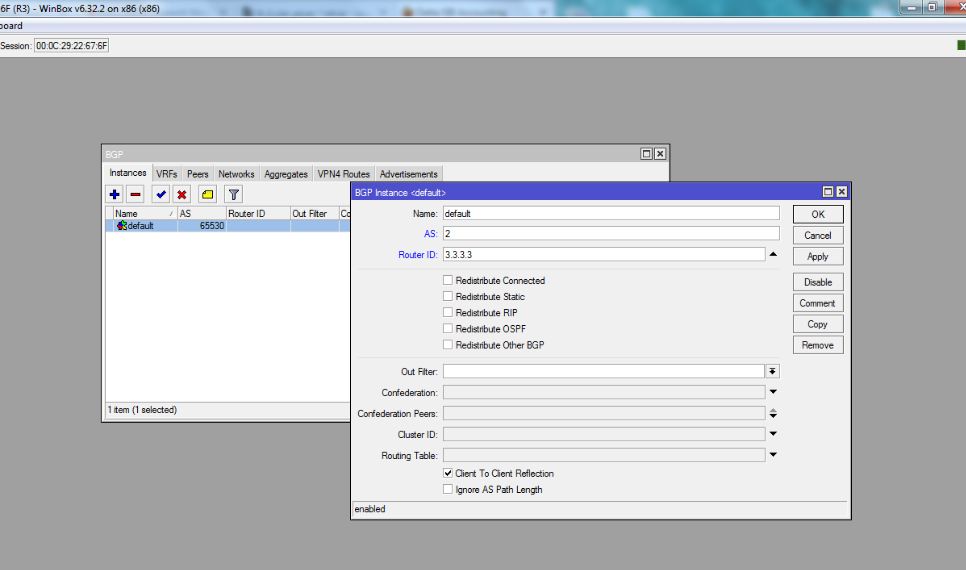

Also, because some commands use set for configuration and others require add (and then later using set to change them), it requires a lot of trial and error to build a list of commands thare produces the same configuration every time they are applied (i.e. Because you cannot reference elements of configuration directly, and IDs can change between commands, it isn’t quite as straightforward as something like IOS or JunOS. updating/changing them).Īll of this makes automating the configuration with Ansible (and other tools) more complex. With these settings, you cannot add or delete settings, only set (i.e. A good example would be the hostname of the device ( /system identity set name=$HOSTNAME). You need to run /ip address print to “regenerate” the list, and then you can remove the second address,įinally, some settings do not have ID numbers. However if you then tried to run /ip address remove 2, the command line would return “no such item” (as you have already removed the second item in the list). For example if you deleted the second IP address ( 192.0.2.104/32) in the list above, this will move the third IP address to second in the list. If you want to change the address rather than deleting it, you would use commands like /ip address set 5 address=X.X.X.X/24 or /ip address set address=X.X.X.X/24.Īlso, the ID numbers are not always consistent. For example, to add an IP address to an interface on a MikroTik, you would do the following: -įlags: X - disabled, I - invalid, D - dynamicĤ D 192.168.122.208/24 192.168.122.0 ether3 RouterOS’s command line interface is unique in the networking world. I have used the extensively in my career, in everything from VPN concentration to regional layer 2 extensions.

You are likely to see high resource usage and performance impact when enabling some of these fetures, but the fact they are available at this price level is astounding.īecause of the price and flexibility of MikroTik devices, they are a very popular option for smaller ISPs and WISPs (Wireless ISPs). Even on their hAP Lite (a £20 access point and router), they support packet captures, BGP, stateful firewalling, IPSec VPNs and more. MikroTiks have a reputation for being a networking swiss-army knife. You’d typically be looking in the multiple hundreds or thousands of pounds for a similar offering from other vendors. For example, I have a MikroTik RB4011 for my home router that has 10 single gigabit ports and 1 ten gigabit port. MikroTik are often significantly lower in price than what you’d find from other vendors. Their operating system (RouterOS) is built upon Linux, but unlike Arista EOS (or the BSD base of JunOS), you don’t typically have access to a Linux shell itself. MikroTik is a Latvian company who provide routing, switching, wireless and other networking devices.
#MIKROTIK CLIENT TO CLIENT REFLECTION SERIES#
You can view the other posts in the series below: -Īll the playbooks, roles and variables used in this article are available in my Network Automation with Ansible repository. The sixth part of my ongoing series of posts on Ansible for Networking will cover Mikrotik’s RouterOS.


 0 kommentar(er)
0 kommentar(er)
